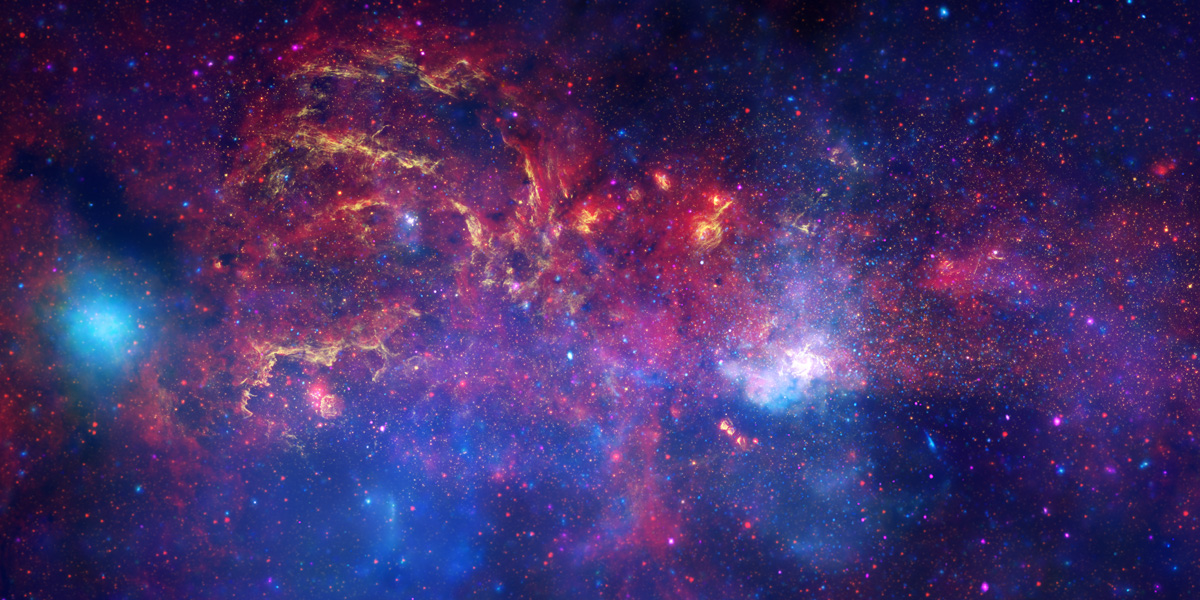
 Credit: X-ray: NASA/CXC/UMass/D. Wang et al.; Optical: NASA/ESA/STScI/D.Wang et al.; IR: NASA/JPL-Caltech/SSC/S.Stolovy
Credit: X-ray: NASA/CXC/UMass/D. Wang et al.; Optical: NASA/ESA/STScI/D.Wang et al.; IR: NASA/JPL-Caltech/SSC/S.Stolovy
Views of the Center
Why is the geometric center of a galaxy such an interesting place? Probably this is the result of the formation process, as a swirling cloud of dark matter gravitationally attracts other dark matter, dragging along a small bit (relatively speaking) of normal matter until a young galaxy full of stars emerges. More (and more interesting) material accumulates at the center of the swirl where the angular momentum is lowest. Whatever the reason, centers of galaxies are known to be very exotic places: some (perhaps most, even perhaps all) house supermassive black holes, some of which feed ferociously while ejecting stupendous particle beams reaching millions of lightyears into dark space. Closer to home is the center of our own Milky Way, a place that's surprisingly difficult to observe from our location, hidden about 24000 lightyears away behind the enormously thick clouds of gas and dust within the Galactic disk. But powerful telescopes can reveal all its secrets. Above is a color-coded overlay of an infrared image (in red) of the center of the Milky Way obtained by the Spitzer Space Telescope, an optical image (in yellow) from Hubble, and an X-ray image (in blue) from Chandra. The three images are beautiful complements of each other, since the IR image reveals cooler material behind thick clouds of dust, the optical image shows the wonderful structure of those clouds along with the distribution of bright massive stars, and the X-rays highlight exotic high energy processes like those taking place at the very center of the Milky Way, the bright white patch on the lower right. That's where our own supermassive black hole resides.
Published: January 11, 2010
<
HEA Dictionary ● Archive
● Search HEAPOW
● Other Languages
● HEAPOW on Facebook
● Download all Images
● Education ● HEAD
>

Each week the HEASARC
brings you new, exciting and beautiful images from X-ray and Gamma ray
astronomy. Check back each week and be sure to check out the HEAPOW archive!
Page Author: Dr. Michael F. Corcoran
Last modified Tuesday, 27-Feb-2024 10:06:39 EST


